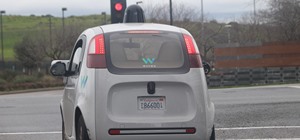The automotive industry is traditionally very conservative, so when a carmaker says it will launch a particular model or feature by a certain date, it means a lot.
Flashback to how carmakers have largely relied on design and ergonomics to sell cars instead of rushing into the digital age, as OEMs from other sectors have. The fact that smart phone makers have long outpaced the automotive sector for in-car communications is but one example.
Indeed, if it were not for Waymo, Tesla, and Uber; carmakers would have been much slower to embrace driverless.
It's even possible that the auto industry might not have even have begun to speak of offering "hands- and eyes-off" driving if Tesla, Waymo, and Uber had not taken the lead. In short, carmakers leave little to chance, especially when safety is concerned. Driverless is no exception. So while entering the game relatively late, you can bet traditional carmakers will meet their schedules.
A case in point is how Ford's Ken Washington, vice president, Ford research and advanced engineering, and chief technology officer, says Ford has made "great progress" in reaching its goal of offering an advanced driverless car by 2021, USA Today reports. This means there is no going back at this point, as Ford has no choice at the expense of its reputation and valuation as a company, but to offer Level 3 or more-advanced driverless cars by 2021 as it said it would.
Ford will also mainly get there by relying on Argo AI, a startup Bryan Salesky from Waymo and former Uber engineer Peter Rander founded last year, Washington told USA Today. Also, Sherif Marakby, rejoined Ford in June after a one-year stint at Uber, as vice president, autonomous vehicles and electrification.
In a blog post in Medium Washington published last week, Washington more or less confirmed Argo represents Ford's driverless program.
Our research team already has a lot going on, so with Argo AI leading development of our virtual driver system for production self-driving vehicles — building off what we started — we can use the existing Ford virtual driver system for continued research without disrupting production work.
Ironically, it was Tesla, the great disruptor, that has suffered recent setbacks, especially in meeting production deadlines. For driverless features, Tesla also lost ground when its new version of Autopilot released in October was not as good as the old one. Only just this month has the new flavor of Autopilot begun to offer the same scope of features as the previous one did thanks to Tesla's recent over-the-air software update.
Today, Tesla CEO and founder Elon Musk tweeted the company will begin to deliver its Model 3, a more-affordable alternative to Tesla's Model S and X, this month. Musk also tweeted Tesla will "reach 20,000 Model 3 cars by December, without specifying whether that number applied to deliveries or production. The Model 3 is expected to ship with the fully updated version of Autopilot.

Elsewhere in the News
Russia want to take a lead in drivelers as the country's first self-drive bus is launched in Vladivostok. Pilotless bulldozers begin work in Australia. A driverless commercial truck enters Guiness World records after traveling 131.99 miles in Colorado to deliver a truckload of Budweiser beer.
Just updated your iPhone? You'll find new emoji, enhanced security, podcast transcripts, Apple Cash virtual numbers, and other useful features. There are even new additions hidden within Safari. Find out what's new and changed on your iPhone with the iOS 17.4 update.





























Be the First to Comment
Share Your Thoughts